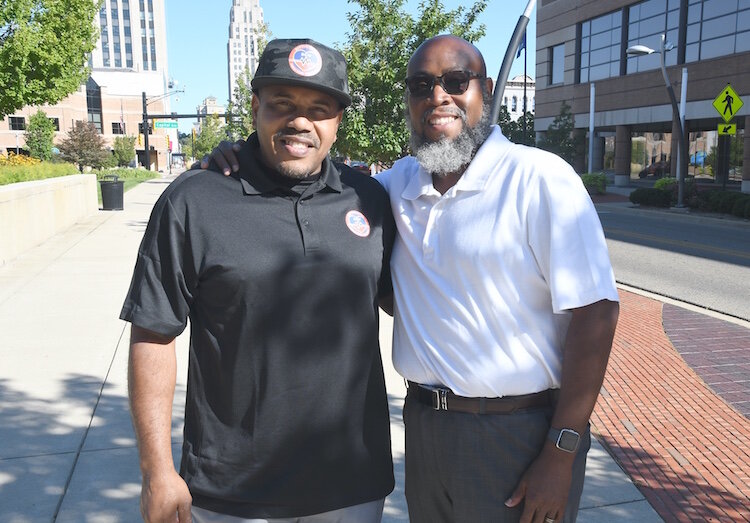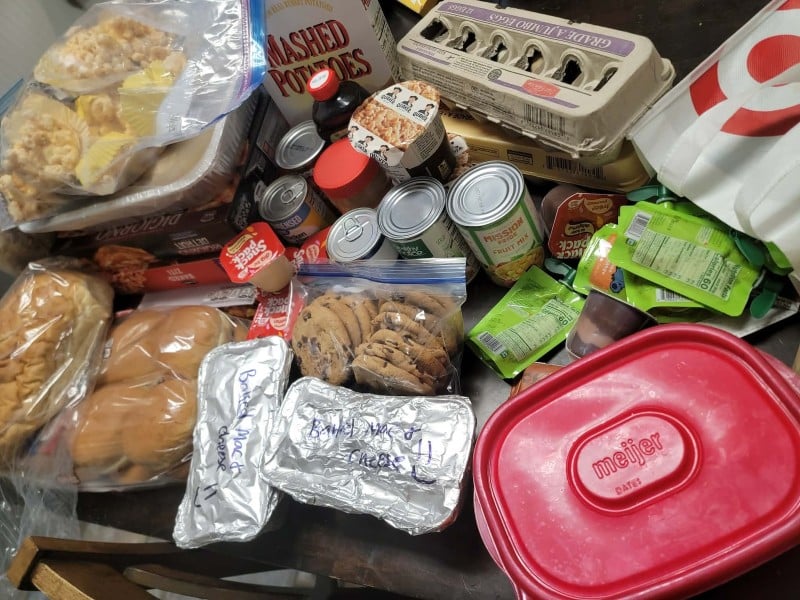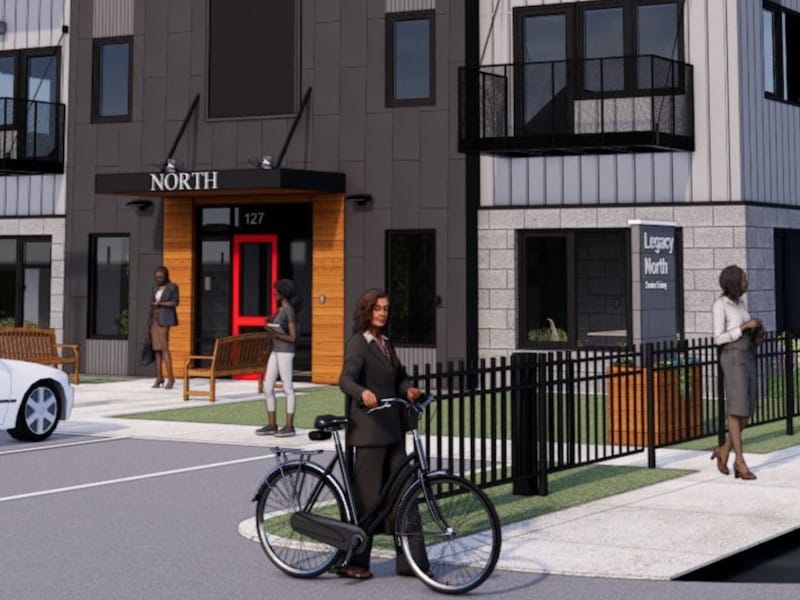Battle Creek program helps victims of violent crime and offers options to those who might commit it
A unique program tailored to the needs of Battle Creek provides wrap-around services to those who have become victims of violent crimes. It also works to stop violent crimes.
Editor’s note: This story is part of Southwest Michigan Second Wave’s On the Ground Battle Creek series.
In his own words, Raul Maysonet says he’s earned a Ph.D. in suffering and stupidity that he’s putting to good use as a Hospital Interventionist in Battle Creek.
Maysonet, who grew up in Los Angeles’ gang culture, is part of a team of three individuals tasked with re-writing a code on the streets currently based on retribution and payback. The former gang member and convicted felon, now a pastor, is working with fellow Hospital Interventionist Pastor John Boyd and Victims Advocate Aleena Robinson to provide victims with support and options other than the ones toward which they traditionally gravitate.
“This is a unique effort tailored to Battle Creek to reduce violence and respond to unpleasant things,” Maysonet says. “We do wraparound services for families impacted negatively by violence.”
The three-person team has been together for about nine months as part of a victims’ advocate program that brings together strands of two other models to create a program designed to meet Battle Creek’s needs.
Their work begins once the victim of a violent crime is admitted to a hospital for treatment.
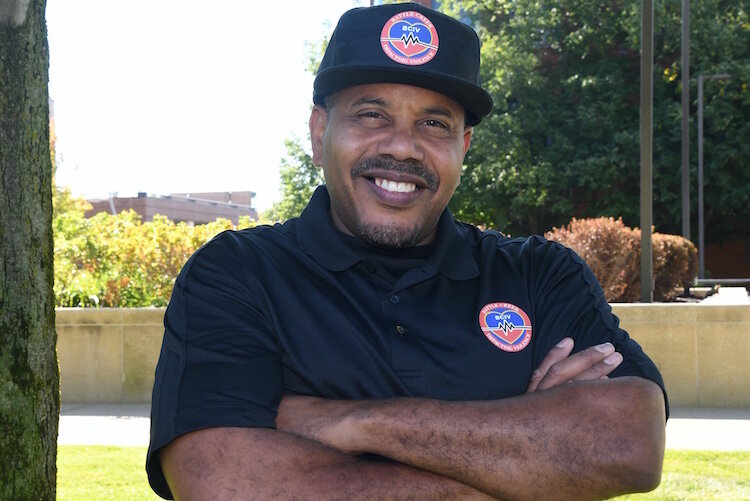
“We are told by Aleena that there’s been a shooting and the victim is now in hospital,” Maysonet says. “We are given the name of the victim and the room number and Pastor Boyd and I go directly to the hospital. Our objective is to capture that person in their most vulnerable state and start to try to establish a relationship with them.”
At the same time, they look for possible gang activity related to the shooting outside of the hospital walls through perimeter checks and also gauge the activity that is occurring in the halls near the victim’s room. Maysonet says it’s not uncommon for emotions to run high among family members and friends of the victim.
“We come into this environment of hostility, but we’re being part of the healing process. We ask, ‘Do you need a blanket or anything. Are they treating you OK? Do you want me to call your Mom?’ and at the same time we’re checking to see that one quiet person who is texting,” Maysonet says. “Most of the time you have to worry about that one person who is not saying much.
“We target the people who are vulnerable and try our best to diffuse any retaliation or further violence and stay with them until they are OK with us. All through this we are building relationships and making sure people are staying safe.”
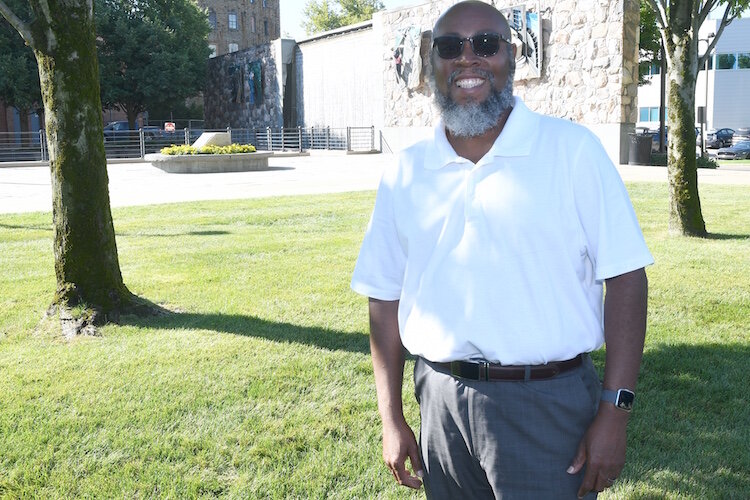
Oftentimes, hospital staff is so busy dealing with the victim and their wounds they are left with little time to address the needs of those who are experiencing trauma caused by the violent crime. Maysonet, Boyd, and Robinson become that necessary trauma team.
Victims they are meeting with have built a life based on a reluctance to trust anyone, he says. Boyd says the hospital is the easiest and best place to make a connection.
“Our message is that we’re here to help you, not hurt you,” says Boyd, who is the Pastor of Love in Action Community Ministries in Battle Creek. His home church is Mount Zion Baptist Church in Kalamazoo.
“Even though people make bad decisions they find out that the decision they made in their minds wasn’t where they wanted to go. What we’re trying to do is to help the people who have made some bad decisions then wake up and realize this isn’t what they wanted to do. Since they’re victims of violence, we want to make sure they have a voice and are connected to someone who can help them.”
Prior to shutdowns caused by COVID-19, Boyd and Maysonet were hoping to work in tandem with city police officers assigned to various schools to interact with youth who were involved in violent encounters, Robinson says.
“The Ideal candidate for this program would be someone between ages 18 and 25,” she says. “The goal is to define this list of young people, refine it, and go from there. But, they also have a reactive approach so, if there’s a shooting in Battle Creek or a violent incident they would step in and meet with the family of the victim and meet whatever needs they have. They will do whatever is necessary to prevent retaliation.”
Until the two Hospital Interventionists can begin the program in the schools, they are assisting Robinson with her caseload.
“A violent incident happens and I’m contacted by either the Sergeant of the Fusion Center or a Sergeant in the Detective Bureau,” Robinson says. “I conduct an initial assessment and then I contact Pastor Boyd or Pastor Raul or both of them and they come to the hospital.”
Responses to meet differing needs
Robinson says each situation is different because each family is different. The first thing she does is introduce herself to them in a way that lets them know there are “no strings attached.”
She says, “They have gone through a crisis and it’s difficult for them to let in a total stranger who says they want to help when they don’t know you. It’s all about the connection. I try to connect with them and let them tell me what they need.”
These needs can be anything from finding a place to sleep, to diapers and food for their children. Robinson says within those first few hours of meeting these families, she is addressing their immediate needs.
Next is a conversation about counseling because these families are going through a very difficult situation. If they want counseling, Robinson facilitates a conversation with a mental health professional right away. However, she says some victims prefer to retreat into their own family and deal with their feelings internally.
“That is a determination they have to make,” she says.
A network of nonprofits, including SAFE Place and Summit Pointe, assist with immediate and long-term needs of these families.
While working on this part of a case, Robinson also coordinates a phone call with the Calhoun County Prosecutor’s Office so everyone knows each other and what their roles are. She says this is a time to make sure concerns are addressed for the victim and their family, including accessing Crime Victim’s Compensation, assistance with burial expenses, or counseling. And some violent incidents require crime scene cleanup.
Robinson says, “If you have experienced a violent crime within your family, that is one of the last things you’re thinking about. Your family is impacted and you shouldn’t be worried about having to call a cleaning service.”
Once these needs have been addressed, she asks the victim and family members about the best way to contact them. Since the program began in December, she says she has had families who don’t want to be involved in what she offers and she says she respects that decision.
“It’s very important for the victims to know who is there for them,” Robinson says. “They are in crisis. I may be speaking to them every day or several times a week.
“I coordinate meetings with the families and the detectives working on the case. It’s incredibly beneficial for the victims to meet with the detectives. It’s important to put a face with a name. Oftentimes, Raul and Pastor Boyd will join us for those meetings.”
Talked the talk, walked the walk
Maysonet and Boyd bring street cred that they both earned by being in the same situations many of the victims and families find themselves in.
Maysonet says he was a “full on” gang member in Los Angeles. His older and younger brothers also were in gangs and his mother was a crack addict who he says, “raised gang members.” His mother and younger brother were both murdered and he didn’t have a father in his life.
“If someone had been there to help me, it sure would have been nice,” Maysonet says.
Boyd says he was raised “in the hood” on Manchester Avenue and attended Ann J. Kellogg Elementary School where he learned how to get along with people who didn’t look like him. He says his ministry takes him out into the community where he has established relationships with at-risk youth and individuals who have had their share of run-ins with law enforcement.
Maysonet says when these individuals know they have someone who is there to support them who has been where they are, a little lightbulb sometimes pops on and they tend to see that support person as a resource instead of a liability.
“You plant the seed. You have to be fearless and tell them that ‘this is not the right way to do this. Let’s work with the law enforcement.’ This is not an easy thing to do and you have to be ballsy to walk into that environment. I offer to get some ribs or McDonald’s before doing anything else. I try to do something that makes us human. We’re not social workers who are going to walk in there and tell them what to do.
“This is a community outreach. They don’t realize it, but it’s a special type of outreach for people who may not normally get this type of treatment. When my little brother was shot to death on my birthday, I had to identify him. There was no trauma team for me. I was 26 when my mom passed.”
Trauma-induced
Battle Creek Police Chief Jim Blocker says often people don’t appreciate the impact trauma has on those who experience it. He says trauma causes people to react in a way that feeds into a culture of violence.
“When we start attaching modern-day discussions of Post-Traumatic Stress Disorder and trauma in young peoples’ lives this explains why the violence in this culture is self-perpetuating,” Blocker says.
“Not only do we need Violence Interventionists, but we also need a Victim’s Advocate who can work with the families and all of those involved to get through it.”
The seed for the program was planted in 2015 when Blocker and his officers had a series of meetings with community leaders and residents to address the number of shooting events specifically during the summer months. He says there were between 50 and 75 where someone was hurt or killed or a structure was hit.
He says in some cases it was multiple shooters and in other cases it was a few who were “getting away with it” a lot.
“We worked hard to figure out who are our shooters, as the community was calling more and more for this violence to stop. Once we figured out who those shooters were, we began working with a Gang Suppression Unit who knew many of these bad actors and began talking and working with them.”
While the shootings did not decrease substantially, the actual number of individuals who were killed as a result of these shootings did decrease, he says. Shots fired are not always directed at an individual, something police officers determine when they discover the actual location of shell casings.
“The GSU has an immediate contact because they’re building relationships and it’s only after those relationships are built that you prevent the shootings,” Blocker says. “Back in the late 1990’s and early 2000’s we were seeing as many as 10 to 16 homicides a year. We’ve seen a substantial reduction.”
In the last seven years, there has been an average of between three and six homicides a year in Battle Creek with none recorded in 2013, Blocker says. And he adds that not all homicides are the result of a shooting. From January to June 2018 there were 46 shootings, according to Blocker, who adds that year-to-date numbers for this same time period in 2019 look to be about the same.
Around the time that the GSU was up and running, Blocker attended a lecture given by a professor at Wayne State University about the code on the streets and how honor and pride play a significant role in violence on the streets so that if someone does something to you, you have to hit back. Blocker says he learned that it’s not a matter of not wanting to cooperate, but rather understanding the respect people have for this code and how to break through it.
Instead of using Gang Unit members who had developed a significant level of trust with individuals on the street as first responders, Blocker says he came up with the idea to bring in people for the purpose of working with and demonstrating that there is an exit strategy. The strategy gives individuals with this retaliation mentality opportunities and resources to take their lives in a more positive direction while maintaining their pride and dignity.
Seeds are planted
Blocker went on to speak with Annette Chapman, Senior Vice President with the Battle Creek Community Foundation about Victims Services and introduced her to Ray Winnans, a Violence Interventionist who operates a nonprofit in Detroit called Detroit Life is Valuable Every day (DLIVE), which partnered with Sinai-Grace Hospital in Detroit and a physician there to do a violence-based Hospital Intervention program. Similar programs are in larger metropolitan areas throughout the United States.
“The whole premise of the model is to have street outreach workers who have street cred who used to be gang members or have violent backgrounds who have transformed their lives into more positive pathways,” Chapman says. “They work with hospital staff in trauma units so that when victims of violent crime come in, they are able to be there and do intervention and possibly change the trajectory of that person’s life, if they survive. The chance of them being revictimized is quite high. Victims of gun violence can be shot multiple times over the course of their young lives.”
The Hospital Interventionist models that now exist are based on an effort begun more than 20 years ago by a physician at a Milwaukee hospital who treated a young boy, who first came into the hospital with a gunshot wound. Over the years, this doctor and his team saw this young man multiple times, repeatedly treating him for gunshot wounds.
Chapman says the young man came in at the age of 15 and died from a fatal gunshot wound, an episode that affected the doctor and his whole team.
“This doctor said nobody was helping these young people mentally or emotionally to change the trajectory of their lives,” Chapman says. “He knew that some of them wanted to get out.”
Battle Creek’s Violence Intervention program is based on a combination of the Milwaukee program and the DLIVE model. Chapman says future plans include the addition of a Hospital Interventionist. Maysonet and Boyd, who have been working together since the program began in December, went to Detroit for their training.
Prior to that, Chapman and Blocker made several visits to Detroit Sinai and met with 40 youth, all victims of crime, including a 17-year-old girl who had been shot six different times. While there, they saw the success of that program and the difference it is making in the lives of victims and their families.
The Battle Creek program is funded through a $30,000 grant from the BCCF, which covers the cost of contracting with Maysonet and Boyd and a three-year $276,000 grant through the U.S. Department of Justice, which covers Robinson’s salary and a detective position.
Blocker enlisted Maysonet, who he met at the Salvation Army where he is employed, and Boyd, through Cops and Clergy gatherings.
“Because Battle Creek has such a high violent crime rate, we wanted to do something here,” Chapman says.
“We want to get victims and their families into this program that will help connect them with community services, trauma and healing services, jobs, education and housing to change the trajectory of their lives and get them out of their current environment.”
Robinson calls this a novel program. She says, “It speaks volumes for the BCCF and the BCPD that they have chosen to partner like this.
“The fantastic aspect of my work is that I will work with a family immediately following a homicide or violent crime and work with them through the entire process of seeking justice.”

